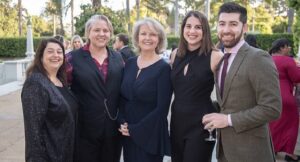
While parents, teachers and students in Pasadena and around the country are working to embrace online learning in an effort to fight COVID-19, everyone agrees that it’s not the ideal situation.
David Samuels in an executive coach who works closely with several Pasadena-area school heads, and serves as a trustee for Flintridge Preparatory School. “The reality,” said Samuels, “is that this is very stressful for both students and teachers.”
While both public and private schools are working hard to deliver best-in-class distance learning, there’s a recognition that distance learning can never fully replicate the in-person experience.
“There’s a level of engagement that’s very different when you’re sitting in your room for the entire school day,’ said Samuels, “having no interaction with human beings other than over your screen.”
The most obvious casualty in the switch to distance-learning is student’s social development and emotional wellbeing. Several recent studies since have found links between the isolation students feel away from school, and increased mental health issues.
“Schools are more aware than ever on the development of the whole child,” said Samuels, “and there’s a real acknowledgment that even in delivering the best distance learning possible, it’s never going to be the same.”
That’s why many schools are looking at technological solutions that can help them return to in-person learning sooner, and with a lower risk of transmitting COVID-19 between students, teachers and staff.
Several Pasadena-area schools are considering a suite of technology designed to combat COVID and other pathogens, called SafeClass. SafeClass is made by Rancho Cucamonga-based FSC lighting. The product is a suite of existing technologies packaged together to actively fight pathogens in both occupied, and empty classrooms.
“There’s been a big push to invent new technologies that fight COVID,” said John Watkins, president of FSC lighting. “But new technologies are also unproven technologies. So, we built SafeClass from technologies that we know effectively kill viruses and bacteria, and are well-understood.”
The SafeClass suite has three key functions. First, it kills airborne viruses like COVID-19 by passing air through filtered UV-sterilization chambers. Second, it combats on-surface bacteria and pathogens with LED lighting that’s safe to use in occupied spaces, but disrupts MRSA, salmonella and other bacteria. Finally, the system uses intelligent automation to run an overnight sterilization cycle that kills both airborne and on-surface pathogens so that teachers and students can return to cleaner classrooms in the morning.
“Obviously most of the interest we’re getting right now in SafeClass is driven by COVID,” said Watkins. “But the system is best suited to schools that are building 10+ year strategies to increase attendance and fight disease.”
Even before COVID-19, nearly 22-million school days were lost annually due to the common cold. Technologies like SafeClass introduced to classrooms in the coming months could pay dividends in post-COVID era as society has an increasing awareness of communicable diseases.
“When I think about how schools might be different after COVID, I think about something Dr. Fauchi said back in the spring,” said Samuels. “While he was confident that one-day soon we’d beat COVID and get back to normal life, he wasn’t sure that hand-shaking would ever be a part of everyday interactions in the future.”
Classroom technologies that fight the spread of disease could be key in helping Pasadena-area schools get back to in-person education safely, and keeping students and teachers safer in the long-term. For now, says Watkins, the first SafeClass deployments are taking place in Texas. However, the company is in discussions with several Pasadena-area private schools, and working on school-district wide deployments in other parts of California.
“Nearly everyone I talk with wants to get back to in-person instruction,” says Watkins. “I’d be honored if a product we developed could be part of the solution to making that happen safely, and improving the health of teachers and students longterm.”









